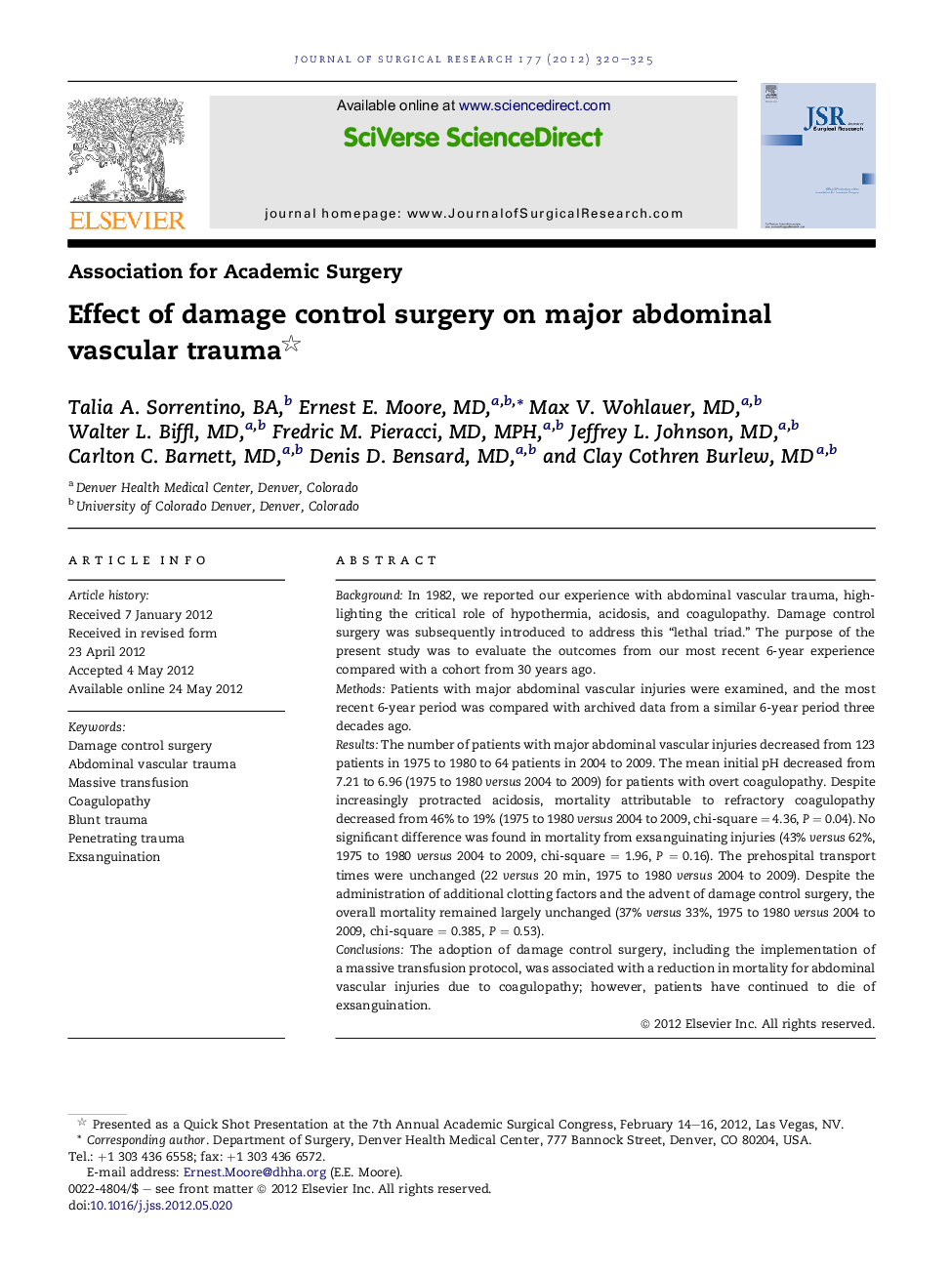| Article ID | Journal | Published Year | Pages | File Type |
|---|---|---|---|---|
| 4301227 | Journal of Surgical Research | 2012 | 6 Pages |
BackgroundIn 1982, we reported our experience with abdominal vascular trauma, highlighting the critical role of hypothermia, acidosis, and coagulopathy. Damage control surgery was subsequently introduced to address this “lethal triad.” The purpose of the present study was to evaluate the outcomes from our most recent 6-year experience compared with a cohort from 30 years ago.MethodsPatients with major abdominal vascular injuries were examined, and the most recent 6-year period was compared with archived data from a similar 6-year period three decades ago.ResultsThe number of patients with major abdominal vascular injuries decreased from 123 patients in 1975 to 1980 to 64 patients in 2004 to 2009. The mean initial pH decreased from 7.21 to 6.96 (1975 to 1980 versus 2004 to 2009) for patients with overt coagulopathy. Despite increasingly protracted acidosis, mortality attributable to refractory coagulopathy decreased from 46% to 19% (1975 to 1980 versus 2004 to 2009, chi-square = 4.36, P = 0.04). No significant difference was found in mortality from exsanguinating injuries (43% versus 62%, 1975 to 1980 versus 2004 to 2009, chi-square = 1.96, P = 0.16). The prehospital transport times were unchanged (22 versus 20 min, 1975 to 1980 versus 2004 to 2009). Despite the administration of additional clotting factors and the advent of damage control surgery, the overall mortality remained largely unchanged (37% versus 33%, 1975 to 1980 versus 2004 to 2009, chi-square = 0.385, P = 0.53).ConclusionsThe adoption of damage control surgery, including the implementation of a massive transfusion protocol, was associated with a reduction in mortality for abdominal vascular injuries due to coagulopathy; however, patients have continued to die of exsanguination.
